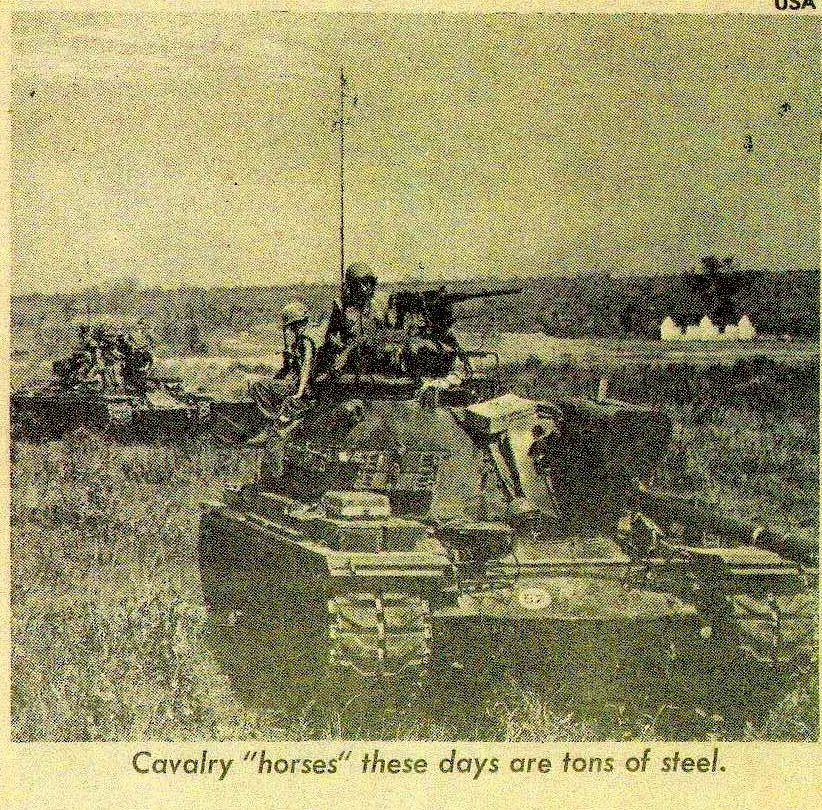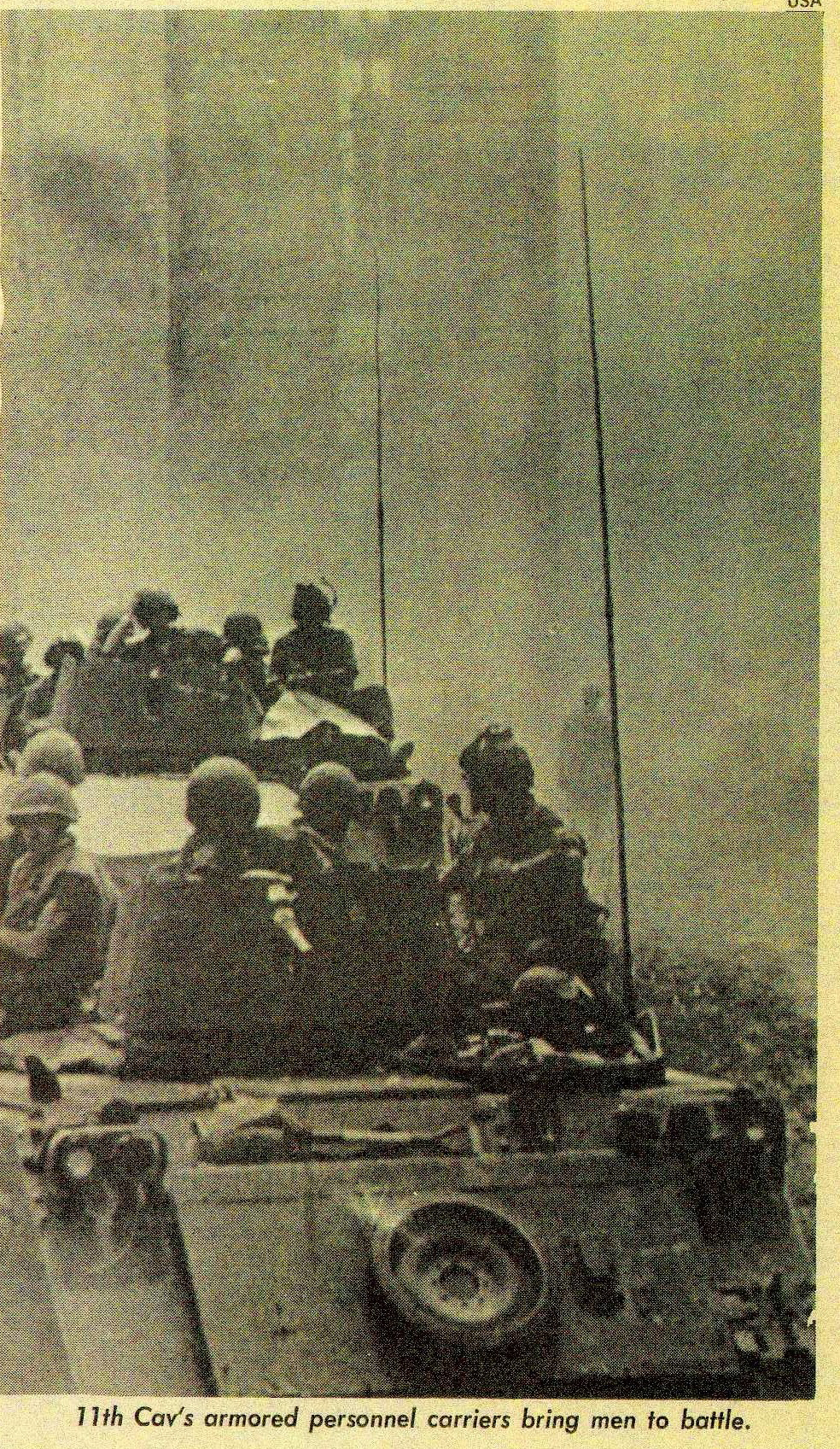
Here is a story that was in the 30 March 1969 issue of Stars & Stripes, by Jack Wachtel, who was a Trooper of the 11th Cavalry in 1929. Very interesting story.
Old Trooper Rides Again
By Jack Wachtel
Wachtel, who served with the 11th Cavalry some 40 years ago (story written 1969), recently made a sentimental journey to Vietnam to take a look at his old and much-changed unit. This is his report. Dust swirled across the troop parade where a platoon of horsemen churned its way through a portion of Cavalry Drill regulations, apparently unmindful of the Mexican border heat.
We three, two recruits and a PS man from the Coast Artillery at Fort Amador, stared from the back of the QM truck. It had high fragile wheels so the elevation was considerable and we could see over the place – see the first sergeant approaching on a rangy gray gelding, for instance: we dropped barracks bags over the side and ourselves after them as the Big Man rode up.
The sign at the gate had read: Detachment 11th Cavalry. Camp L.J. Hearn, California.
The year was 1929.
You enlist in a regiment of cavalry – some 690 horses and men, a few mules and maybe half a dozen of these newfangled motor trucks. . .
You come back to it three wars and forty years later and what do you find?
Nearly 5,000 officers and men, a thousand vehicles of all types and 50 command and combat helicopters.
An organization of three six-troop line squadrons, an air cavalry troop, the headquarters element and all kinds of attachments: medical, engineer, psychological warfare, military intelligence, public relations, chemical warfare. . .
Staggering firepower carried into combat on 51 tanks, (18 of them the new Sheridan’s), 300 armored cavalry assault vehicles, nine Cobra gunships and a host of machinegun jeeps and small helicopters.
A commander right out of the history books, Colonel George S. Patten, III, son of Old Blood and Guts and a top-flight professional solider in his own right.
On the day this writer reported in to the 11th Cavalry, 40 years almost to the minute from the time of his original enlistment, the regiment was in action against the Viet Cong in a 70 mile wide zone north of Bien Hoa and east of Saigon.

It was a day of heavy engagement in widely scattered locations. Heaviest fighting, by L Troop, 3rd Squadron in a reconnaissance in force operation, saw five VC killed and another five wounded among the prisoners.
Blackhorse regiment lost two killed in action that day and 17 wounded.
It was a far cry from the routine of 1929. Platoon drill, horse exercise and stable fatigue were the order and a trooper’s main concern was how much of his $21.00 pay he’d draw at the end of the month after satisfying his several creditors.
War, and the threats of war, were a long way off. Congress was up to its collective ears in world disarmament and isolationism: the general public was expressing its interest in repeal of prohibition and lower taxes. The regular army was small, professional, and neglected.
By contrast Colonel Patton’s troops now have the latest and best equipment the republic can afford. The new Sheridan tanks fire enormous missiles from their 152-millimeter tubes and eve throw their own hand grenades for close-in protection. The Cobra gunship packs tremendous firepower and are capable of instant response; the ACAV assault vehicle provides a ground mobility unequalled on the Viet terrain.
Under Patton’s aggressive leadership the troops hit hard and often. “Find the bastards, then pile on” is Patton’s terse directive and it has become a way of life for his troopers – in the best cavalry tradition.

“We’ve got a fine regiment,” says Patton, “and Charlie knows it.” Blackhorse has a combat record that began on Samar in the Philippines in 1902 and extends through the Mexican border troubles of 1916 into World War II – Normandy, Rhineland, Ardennes-Alsace – and we’re adding to it every day.
“We have a higher percentage of surrenderees than many outfits and this is an indication both of our combat efficiency and the effectiveness of our village pacification program. We’ve demonstrated we can be ruthless in action but genuinely helpful and friendly to any who want and need help. The success we’ve had in the villages of Tan Binh, Binh May and Binh Co here in Chau Thanh province is direct evidence of that effectiveness.”
Patton’s feelings about Blackhorse are echoed by his sergeant-major and constant shadow, SMG Paul W. Squires, a 45-year-old professional from West Virginia whose additional duty includes handling communications in his colonel’s command chopper and reloading his shoulder weapon during air-to-ground combat. “the outfit’s got top morale and it will stay that way,” is how Squires sums it up.
And to complete the cross-section this writer talked to the newest trooper in B Troop, Ronald Robertson, 18, of Addison, Alabama and a regular army youngest fresh out of basic at Fort Knox. They call him Alabama, naturally, and he’s got a girl waiting in Addison but he thinks he’ll make a career of the cavalry.
“The 11th is home for me now. My buddy from Fort Knox is sitting over on the next tank and we like this service. We’re going to stay with it.”
Viewed from a distance of 40 years, morale in the 11th Cavalry is as high as it ever was. Weapons and means of movement have changed but the spirit of the men is the same, and the principle of closing with the enemy and destroying him – “Fin the bastards, then pile on” – continues as a basic military precept.
And one thing more hasn’t changed. The heat and dust of the Mexican border, 1909, has its counterpart in Chau Thank province north and east of Saigon, 1969.
